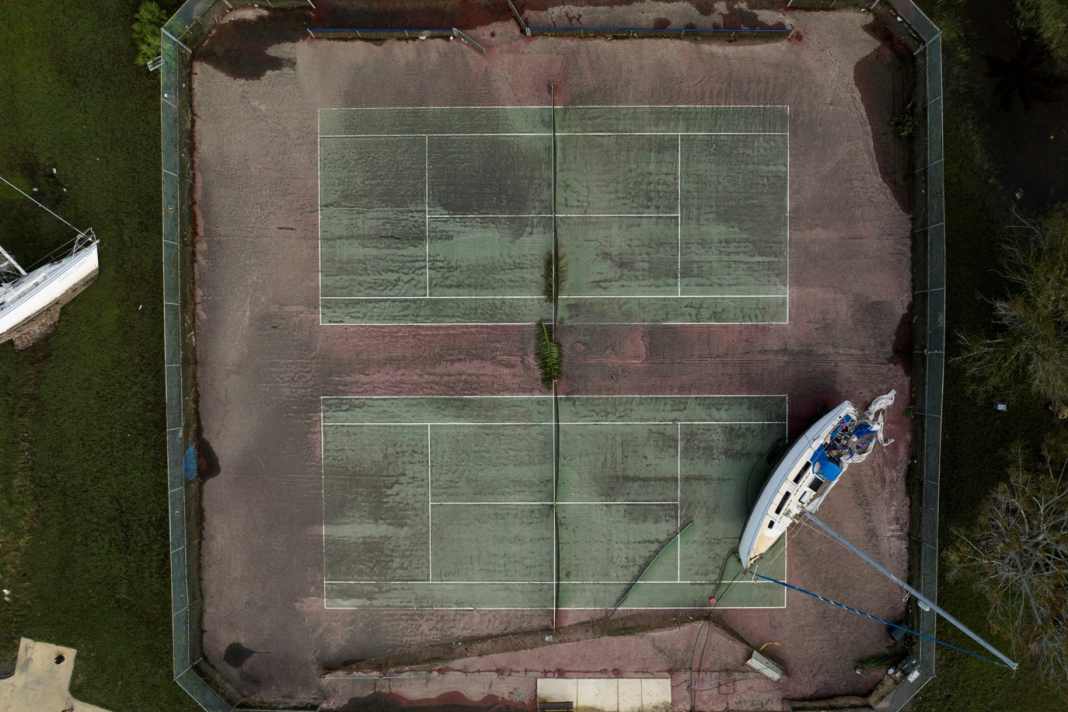





The central west coast of the state was particularly affected. Near Sarasota, south of the Tampa Bay metropolitan region, the Hurricane Milton made landfall on Thursday night last week and began its path of destruction. It brought with it winds of up to 200 kilometres per hour, a storm surge and almost half a metre of rain. There were also dozens of tornadoes. The flooding was widespread. 7.2 million people had previously received evacuation orders.
Stranded boats in the streets
In Sarasota County south of Tampa, the storm surge was the highest at around three metres - the forecast was for up to five metres. Hurricane Milton pushed the masses of water over the shallow offshore islands into bays and estuaries - similar to the devastating Baltic Sea storm surge a year ago.
The small town of Punta Gorda, at the mouth of the Peace River, was particularly affected, where the historic waterfront was flooded and boats were torn from their moorings, thrown onto the shore or even washed inland. Two sailing yachts ended up on a tennis court, sports and fishing boats in gardens and on streets.
The fact that the marinas and private moorings in the affected area were not more severely affected is partly due to the fact that the storm surge was not even higher and partly due to experience with tropical storms in the region. Owners are very aware of the need to secure their boats extensively, and short-term measures in the event of official warnings are routine. The disaster management authority FEMA also sees the widespread use of specially secured floating docks as a decisive factor compared to fixed docks.
A freezer as a lifeboat
In the hours that followed, the police, fire brigade and coastguard carried out hundreds of rescue operations by boat, primarily in flooded residential areas, where stranded people had to be rescued from houses and cars.
One of the most spectacular missions, however, took place in the Gulf of Mexico, about 25 nautical miles off Longboat Key, an island south of Tampa Bay. A Coast Guard helicopter team rescued a fisherman who had been working on rudder damage to his unmanoeuvrable boat as the hurricane approached. He managed to contact the Coast Guard in St. Petersburg by radio before contact was lost at around 6.45 pm.
More on the topic:
As soon as the conditions allowed the helicopter to be deployed, the EPIRB signal could be localised. When the rescuers arrived at the location, there was no sign of the boat. However, the castaway was floating on the water - on a large freezer. The helicopter's rescue swimmer was lowered and helped to rescue the fisherman.
"The skipper survived a nightmare scenario for even the most experienced sailor," said a coastguard spokeswoman after the operation: a night on the freezer, in seven-metre-high waves and hurricane-force winds.
50 billion: The balance sheet of Hurricane Milton
Although less catastrophic than feared, Milton had a devastating impact on the west coast of Florida. The storm caused significant property damage, loss of life and countless water rescues. At least 23 people died. The storm followed just two weeks after Hurricane Helene, further complicating disaster relief efforts.
At times, up to three million people in the state were without a storm. Milton also left a trail of destruction in its wake, flooding dams, destroying houses and even blowing the roof off a baseball stadium. According to initial estimates, the damage could total up to 50 billion US dollars.

